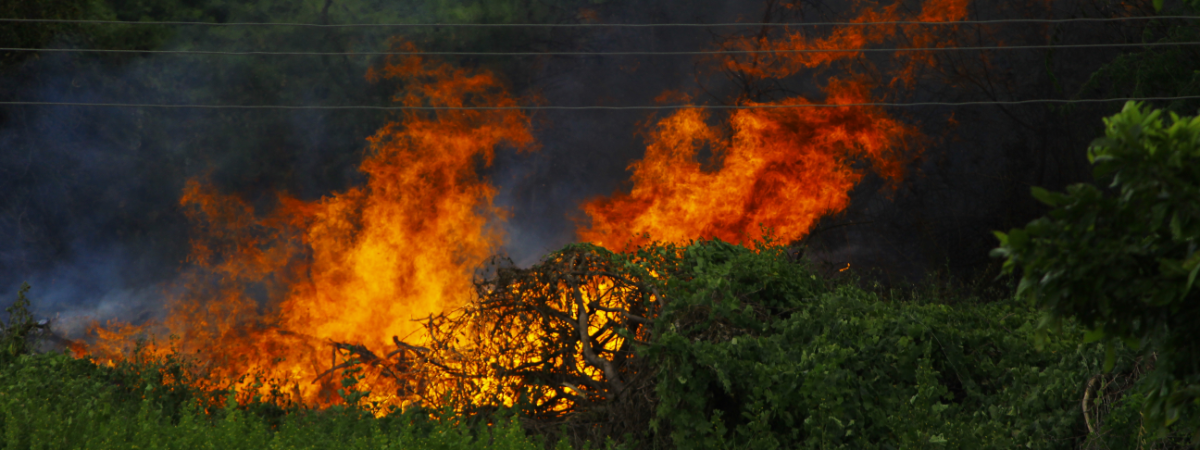Wildfires are a recurring problem which, as well as damaging the environment, directly or indirectly affects people’s health, well-being and economy. But why do these fires occur? In this article, we look at the various scientific and natural factors that influence Wildfires, try to understand how they spread and how we can prevent this threat.
Natural causes of wildfires
Fires caused by lightning are the most common natural fires, especially during the summer months. Lightning is attracted by the upward convection caused by the heating of the ground and can leave sparks capable of starting a fire.
Extreme weather can also cause fires. High temperatures, lack of humidity, strong winds and dry thunderstorms considerably increase the risk of flames spreading.
The volatile conditions created by forest or meadow fires started by cigarettes, bonfires or flares are sometimes the cause of fires that burn for several kilometres.
Faced with these far-reaching consequences, all countries need to be aware of the need to prevent the risks of fires, particularly those of a natural origin. Strict measures must be taken to ensure the safety of inhabitants and the conservation of nature.
Human causes of Wildfires
Fires can be caused by natural factors (such as lightning), but they are more often the result of human actions. The most common practice, and the most dangerous, is the excessive use of campfires. Although these activities are enjoyable, fire detection and prevention must not be neglected.
Other human wildfires causes are the inappropriate use of flammable materials, such as lamps, cigarettes or ovens, and lax fire prevention, such as the lack of fire-fighting equipment and warning systems. Collective awareness and gradual action are needed to prevent fires. With simple and appropriate precautions, fire damage can be avoided.
Risk to human life and wildlife
Fires are among the greatest threats to living beings and cause considerable damage to human populations and wildlife. Initiated by an accidental or deliberate source of ignition, fire causes destruction, pollution and often loss of human and animal life.
These fires can take on extremely catastrophic proportions depending on how quickly they grow and spread. In the absence of a solid and concerted response, wild and protected populations suffer greatly in such a context where their living environment is often very hard hit.
The human impact is also worrying, and calls for greater responsibility than ever to protect homes and property from the risky conditions of large-scale disasters. Only by working together to protect against fire, and by ensuring the sustainable development of our territories, will we finally be able to limit the danger to both human and wild populations.
Understanding wildfires in detail
In conclusion, this article provides a detailed summary of the phenomenon of wildfires, together with the underlying scientific explanations. Every year, there are numerous fires with harmful consequences, particularly for the environment and the well-being of living beings. Although the varied causes and effects of these fires are very complex to understand, it is necessary to prevent the risks and protect the forest. We must act collectively to preserve our environment and ensure a better future for our future generations.
